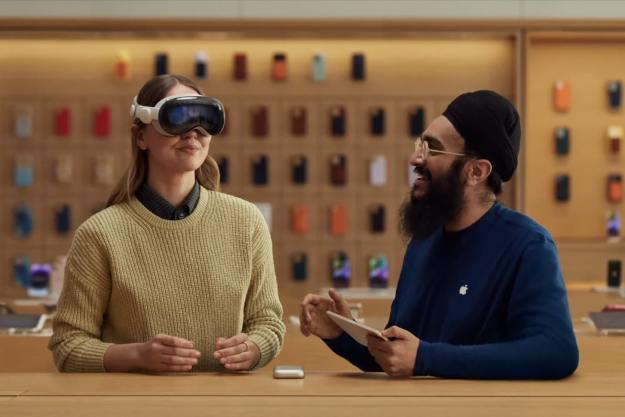A recent hands-on preview of HTC’s Vive Focus mobile virtual reality headset reveals that the device, currently only available in China, relies on the same lenses and displays that will be used in HTC’s next-generation VR headset for the PC: The Vive Pro. It serves as a “premium” alternative to other stand-alone VR headsets sold on the Chinese market, sporting premium components and a premium price tag of around $525 before tax.
As previously reported, the Vive Focus doesn’t rely on an inserted smartphone. Instead, it contains everything you need for an untethered virtual reality experience. Powering this headset is Qualcomm’s Snapdragon 835 processor typically found in high-end smartphones. Behind each lens is a 1,600 x 1,440 OLED display, higher than the 1,280 x 1,400 per-eye resolution seen with Lenovo’s Mirage Solo headset. Combined, the Vive Focus has a maximum resolution of 1,600 x 2,880.
As for other features, the Vive Focus sports a refresh rate of 75Hz, slightly below the vomit-preventive 90Hz rendered by the HTC Vive and upcoming Vive Pro. It also provides a 110-degree field of view, a micro SD card slot, built-in Wireless AC connectivity, a built-in battery, and sensors for tracking movement and position. There is no need for a tethered PC or external sensors to track your movements through physical space.
Typical “mobile” VR headsets rely on a smartphone to provide all the hardware, such as Samsung’s Gear VR. In this case, the headset relies on a single screen at 2,560 x 1,440 that is divided into two views of 1,280 x 1,440. Audio either travels through the phone’s included headphone jack or its built-in speaker.
One problem with this setup ties directly into performance: It’s a phone after all, so there are multiple tasks running in the background associated with the carrier and messaging along with services related to social networks, Google Play, and so on. Juggling all those processes on top of a VR experience can be taxing on the processor.
Outside eliminating the smartphone, a stand-alone VR headset doesn’t deal with all those processes, but instead focuses solely on VR. Manufacturers are also beginning to incorporate full-motion sensing with world-tracking abilities so you can experience and move around in VR without worrying about bumping into furniture, walls, people, annoyed pets, and tripping over cables.
Vive Focus includes a fan to keep the innards cool while the Snapdragon chip does all the rendering and motion processing. This essentially allows the chip to provide better performance versus the same non-cooled chip throttling back because it’s simply getting too hot within the confines of a smartphone. You don’t want a hot chip sitting close to your face, either.
The headset itself provides six degrees of movement — forward/backward, left/right, up/down, and three perpendicular axis — while the included controller simply tracks your hand movements (three degrees). Unfortunately, it’s still a mobile-class device; you’re simply not going to see the same high-resolution visuals generated on the PC-tethered Vive and Vive Pro headsets.
Ultimately, the availability of premium content on Vive Focus will depend on developers and how well they take advantage of the hardware.
Editors' Recommendations
- This new VR headset beats the Vision Pro in one key way and is half the price
- What’s behind customers returning their Vision Pro headsets?
- Zoom unveils immersive app for Apple’s Vision Pro headset
- HTC just fixed a major shortcoming of standalone VR headsets
- There’s a bunch of bad news about Apple’s Vision Pro headset


